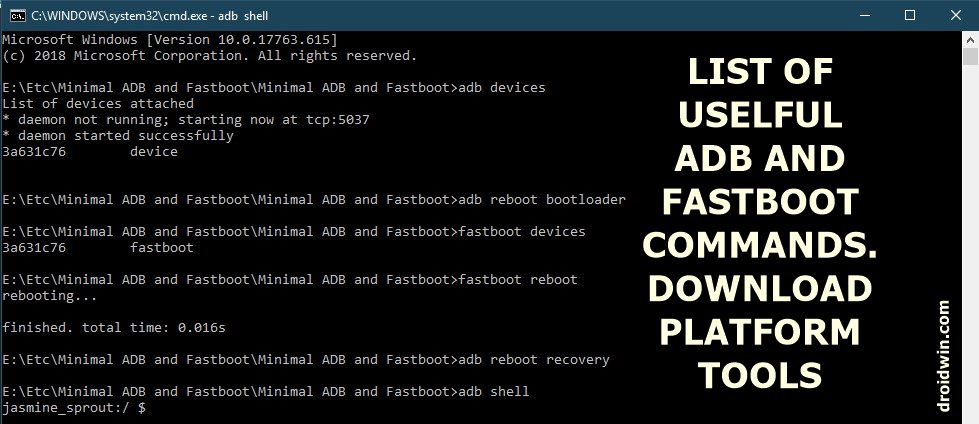
For example, you’d use the name to uninstall the Angry Birds app.Īdb push C:file /sdcard/file - Pushes a file from your computer to your device.

In addition to the variety of tricks that require ADB, ADB offers some useful commands:Īdb install C:package.apk - Installs the package located at C:package.apk on your computer on your device.Īdb uninstall package.name - Uninstalls the package with package.name from your device. RELATED: How to Edit Your System PATH for Easy Command Line Access in Windows Useful ADB Commands The process is a bit different on Windows 11, 10, and 7, so check out our full guide to editing your System PATH for the steps required to do this. However, if you add it to your Windows System PATH, that won’t be necessary–you can just type adb from the Command Prompt to run commands whenever you want, no matter what folder you’re in. If all went well, you should see your device in the list, and you are ready to start using ADB! Step Four (Optional): Add ADB to Your System PATHĪs it stands, you have to navigate to ADB’s folder and open a Command Prompt there whenever you want to use it. Once you’ve installed your device’s drivers, plug in your phone and try the adb devices command again: adb devices Use the Browse my computer for driver software option.įind the drivers you downloaded for your device. On the Driver tab, click “Update Driver.” You may see a yellow exclamation mark next to the device if its driver isn’t installed properly. Open the Device Manager (click Start, type “Device Manager”, and press Enter), locate your device, right-click it, and select Properties. If you download the drivers manually, you may have to force Windows to find them on your device. If that doesn’t happen, you can usually find the drivers for your device from the XDA Developers forums. In the vast majority of cases, your PC will automatically detect your phone and set it up with the appropriate drivers. If your device is connected but nothing appears in the list, you’ll need to install the appropriate drivers. To test whether ADB is working properly, connect your Android device to your computer using a USB cable and run the following command: adb devices Replace the file destination with your own: You can do this by entering the command below. Open the Command Prompt and change the directory to where you unzipped the file earlier. Step Three: Test ADB and Install Your Phone’s Drivers (if Needed)
:max_bytes(150000):strip_icc()/sdk-platform-tools-downloads-5d82fdc8d4d24c10a29a6b5cc775ad89.png)
Check the “Always allow from this computer” box and tap OK. Later on, when you connect your phone to your computer, you’ll see a popup entitled “Allow USB Debugging?” on your phone. Head back to the main Settings page, and you should see a new option in the “System” section called “Developer Options.” Open that, and enable “USB Debugging.”


 0 kommentar(er)
0 kommentar(er)
